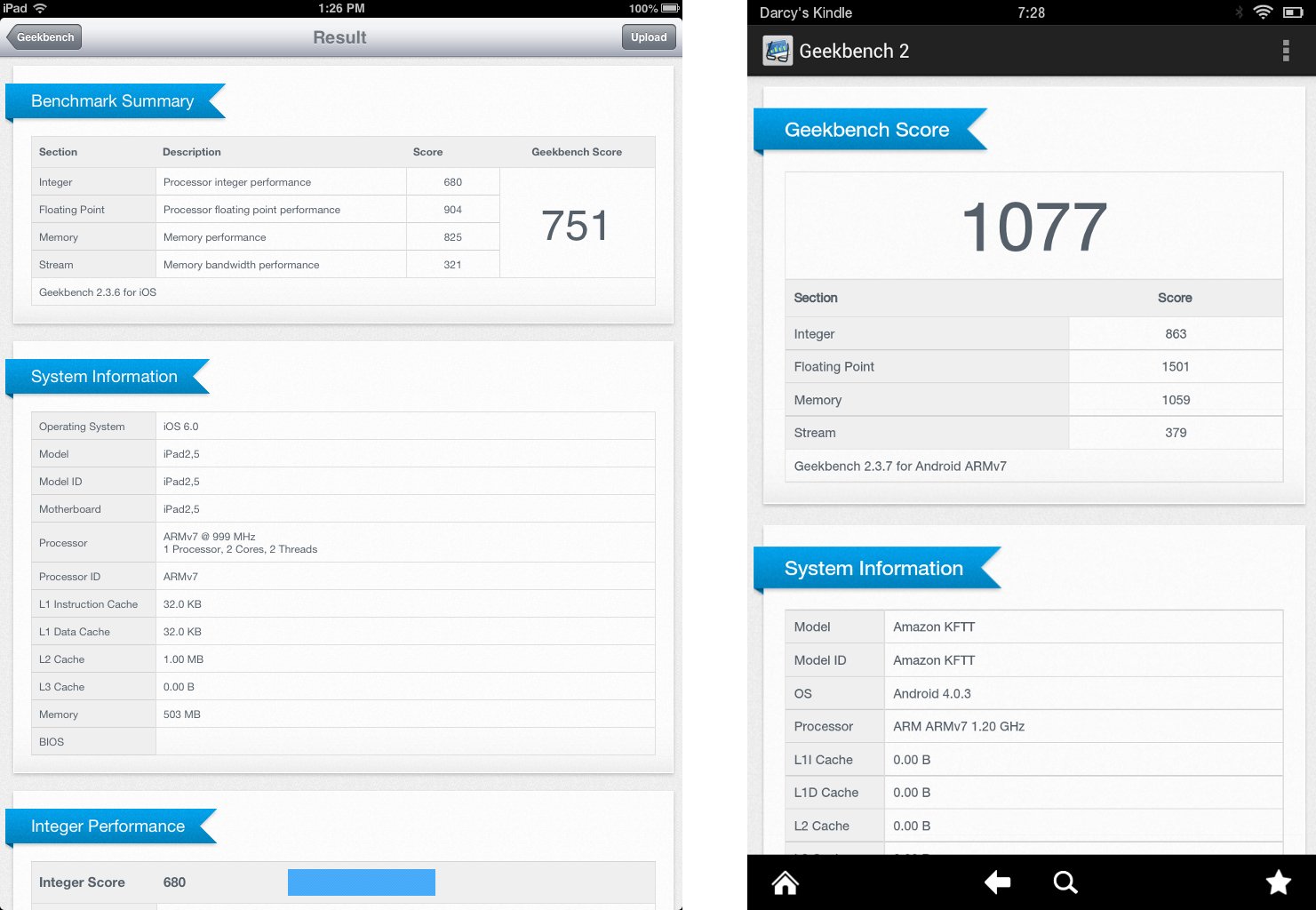If you've ever wondered about the performance of your iPhone or iPad, or fancied the idea of camparing the performance of two different models, Geekbench may be the app you have been looking for. This iOS port of the Mac and PC benchmarking software can reveal a great deal about your mobile device. Geekbench 2 bridges the generation gap between 32 bit and 64 bit computing by providing both 32-bit and 64-bit versions. Find out how fast your current 32-bit applications run today, and how fast your future 64-bit applications will run tomorrow.

Find out how fast your Android device is with Geekbench 4, the latest version of the popular cross-platform benchmark. Geekbench 4 includes updated CPU tests that model real-world tasks and applications.

These tests are designed to quickly and accurately measure mobile CPU performance. Every Geekbench 4 CPU test is multi-core aware, allowing Geekbench 4 to measure the full potential of your device's CPU. Geekbench 4 also includes new GPU Compute tests that measure the processing power of your device’s GPU. Unfortunately, I cannot keep this Android app because the app cannot be moved to secondary storage. I'm like every Android user and have limited available space on primary storage.
Geekbench Ipad Pro 10.5
Because of the OS and other required data that must be stored on primary storage, I have to move apps to my SD card after I install them in order to make room. I understand that users must first install apps to primary storage on Android. Users should then be able to move apps like this to Secondary Storage in App Storage Settings. This app does not allow that. Sadly, I have to uninstall this app now since I don't have enough space on my primary storage to keep it. To be clear, developers can enable apps to be moved to SD Cards. I understand that there are legitimate reasons why some apps can't be moved to secondary storage.
For instance, App Widgets or Alarm Services will no longer work from apps run on Secondary Storage. I'm not sure if those examples apply to this app, but again, my opinion is to let the user make the trade off. Some users like myself will give up features just to be able to move the app to SD Storage. For me, it's better to be able to keep an app with limited functionality than have to uninstall it altogether. I've heard that some developers prevent their apps from running on SD Cards simply because the app may run slower. I surely hope that is not the reason with this app. My opinion is: Let the user decide.
As it stands, I can't use this app at all because I don't have enough space to keep it installed on my primary storage. The reason that I believe this app deserves a lower star rating is because the developer has the option to allow this app to be moved to SD cards, but the developer has not implemented that.
Furthermore, other competing apps in the Google Play store can be moved to SD Cards. SUGGESTIONS FOR THE DEVELOPER: If there is not an unsurpassable reason to allow users to move your app to SD Cards, then please change the 'android:InstallLocation' attribute in your app to allow it to be moved to an SD Card after installation. If you are worried about a second-rate user experience, then simply display a warning to the user of the functionality that will be lost by running the app from an SD Card.
If you haven’t heard this suggestion from other users, then please keep in mind that many are probably just uninstalling your app when they run out of primary storage space on their phone. Users with an SD card in their phone usually have tons of available storage there, so there is never a reason to go through those apps and uninstall them. In other words, another good reason to allow your app to be moved to SD Storage is the users are much less likely to uninstall it to make room for other things on their limited primary storage. If there are legitimate reasons that your app can't be moved to a device's SD card, then please at least create a setting in the app that allows users to store the App Data on the SD card. Thank you so much for considering my suggestions and feedback.

I'm passionate about this because I would otherwise like to be able to keep and use your app.:).
454 Since the iPad mini uses the same processor core that's found in both the iPad 2 and the iPad (3rd generation) (while the Apple A5 and the Apple A5X have different graphics cores both use the same processor core) it's no surprise the Geekbench scores of all three are roughly the same. When it comes to the iPad (4th generation) the situation changes. The iPad mini is, in some ways, half of an iPad (4th generation). It has half the processor performance and half the display resolution. However, the iPad mini is also half the weight of the iPad (4th generation).
If you're thinking of buying a new iPad the question of which iPad you choose will largely depend on whether you want a small iPad or a powerful iPad.